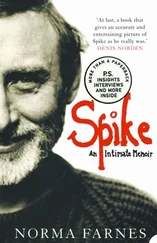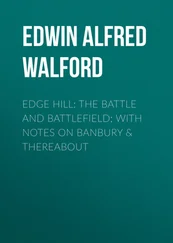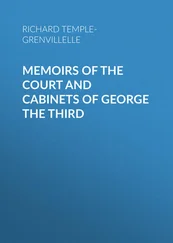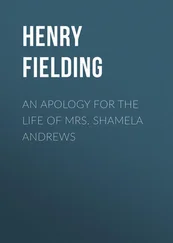“Clint, we need you to come down to the autopsy room.”
“Yes, sir. I’ll be right down.”
I left the seventeenth floor with Paul in charge and went to the autopsy room. As I approached the door Kellerman stepped out and said “Clint, before the autopsy is closed, I need you to come in and view the president’s body.”
I had a good idea as to why I had been selected to do this. I knew I had to do it, but I dreaded it. I simply nodded to Kellerman that I understood.
“I know this isn’t going to be easy,” he said, “but we decided that since you are the closest to Mrs. Kennedy, it’s important for you to see the body, in case she has any questions.”
I took a deep breath, as Kellerman opened the door.
Lying on a table, covered with a white sheet, was the body of President Kennedy. Only his face was exposed, and it looked like he was sleeping.
Bill Greer was there, and Dr. Burkley, and General Godfrey McHugh, President Kennedy’s Air Force aide. There were additional people I did not recognize. A man in a white coat stood beside the table. I’m sure they told me his name, but it didn’t register.
The man gently lowered the sheet just enough to expose the president’s neck, and he began describing the wounds to me. A wound in the front neck area where a tracheotomy had been performed at Parkland Hospital in an effort to revive the president. He said it covered an exit wound. Then, rolling the president gently over to one side, he pointed out a wound in the upper back, at the neckline, quite small. This, he said, was the entry wound that corresponded to the exit wound at the throat.
Moving the body back and slightly to the left he pointed out the wound in the upper-right rear of the head.
I swallowed hard, listening closely, as the doctor explained what had happened. It appeared that the impact of the bullet hitting the president’s head was so severe, it caused an explosive reaction within the makeup of the skull and brain, so portions of the brain erupted outward, and a portion of the skull with skin and hair attached became like a flap.
The image of what I saw when I was wedged up above the backseat came flashing back into my mind. The head wound was exposed to me and I could see into his brain, part of which had exploded outward. It looked like somebody had flipped open the back of his head, stuck in an ice-cream scoop and removed a portion of the brain, then scattered it all over Mrs. Kennedy, the car, and myself. It was a horrific sight. And I couldn’t get it out of my mind.
“Yes, Doctor,” I said. “That is exactly what happened. I know. I saw it. I was five feet from the president when the impact occurred.”
If only I had run faster, reacted a little quicker . . .
The explanation by the doctor and my observation of the body was concluded. I thanked the doctor and returned to the seventeenth floor.
“What did they want?” Paul asked.
I told him what had just transpired. “They assume Mrs. Kennedy will at some point want to know the details of the president’s wounds. I am quite sure that will never happen.”
Paul shook his head. “No, that will never happen.”
Dave Powers and Kenny O’Donnell had gone to a nearby mortuary and purchased a mahogany casket to replace the one from Dallas that we had damaged. Sometime after 3:00 A.M. we were notified that the procedures had all concluded and everything was ready to leave for the White House.
Family members were still present so a small motorcade was set up. The casket bearing the body of President Kennedy was placed in the Navy ambulance. Once again, Mrs. Kennedy and the attorney general got in the back with the casket. Agent Greer drove with Mr. Kellerman in the front seat. I followed in White House car No. 1 with the president’s sister Mrs. Jean Smith, Mrs. Robert Kennedy, Secretary of Defense McNamara, and Dr. Walsh. Paul rode in car No. 2 with O’Donnell, O’Brien, Powers, and Dr. Burkley.
We arrived at the White House at 4:24 A.M. A U.S. Marines honor guard met us at the Northwest Gate and marched in formation in front of the ambulance as we drove up to the North Portico entrance to the White House. The sight of those young Marines, their chins held high, paying respect to our fallen president, in the black of night, was almost more than I could bear.
We left here two days ago with a young, vibrant, active man as President of the United States, and now we are bringing him home in a casket.
Military body bearers removed the casket from the ambulance and carried the president into the White House to the East Room. There the casket was placed on a catafalque identical to one used for Abraham Lincoln in 1865. The family gathered around and an honor guard was formed and placed on duty around the casket.
As I watched this sad ceremony unfold, Agent Paul Rundle, a close personal friend, approached me.
“Clint, is there anything I can do?”
I simply shook my head no; there was nothing anyone could do. There was nothing anyone could do to relieve the pain, the anguish, the sense of failure and guilt I felt.
Mrs. Kennedy, along with her friends and family, went up to the second-floor living quarters. I went to my office in the Map Room and wrote some notes about what had happened. After being reassured Mrs. Kennedy was in her quarters with no immediate plans, I got in my car and drove across Memorial Bridge to my apartment in Arlington. It was 6:00 A.M.
I arrived home to find my seven-year-old son, Chris, and two-year-old son, Corey, still asleep. My wife, Gwen, was there to greet and console me. I managed to shave, shower, and eat a little something before I was back in the car on the way to the White House. There was no time to grieve. No time to rest.
When I got to the White House, I went straight to my office. Paul Landis had arrived at the same time. I shut the door, and we talked about the events of the past twenty-four hours. It was tough. We were both exhausted—mentally, physically, and emotionally shattered.
Nobody would ever be able to understand what we had been through. Nobody. Not our families, our friends, not even the other agents. To know the president and Mrs. Kennedy like we did, and to see him assassinated before our very eyes, was the tragic bond that Paul and I shared.
But there was no time for mourning—we still had Mrs. Kennedy to protect.
25
The Funeral
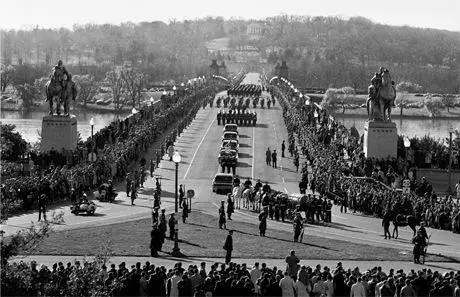
It had rained overnight, and now the rain was coming down steadily, but gently. It was as if the heavens were shedding tears, mourning right along with the rest of the world. I hadn’t seen a television, didn’t know it at the time, but word of the assassination had spread from Dallas to New York to England, France, and Ireland; to Germany, Greece, Italy, India, Pakistan, Ethiopia, and the Soviet Union; down to Mexico and South America. President John F. Kennedy had touched the world, and now the world was in mourning.
The agents on the President’s Detail were rotating shifts for President and Mrs. Johnson, and their daughters. Setting up additional security at the Elms—the vice president’s private residence—doing all the advance work for the venues planned for the state funeral. They were short of manpower and working double shifts. Paul Landis and I were the only agents with Mrs. Kennedy. There was nobody to relieve us.
A private Mass was scheduled in the East Room at 10:00 A.M. Paul and I watched as Mrs. Kennedy gathered with members of the Kennedy family and close friends, as they cried and prayed together, near the casket of the slain president.
Читать дальше






